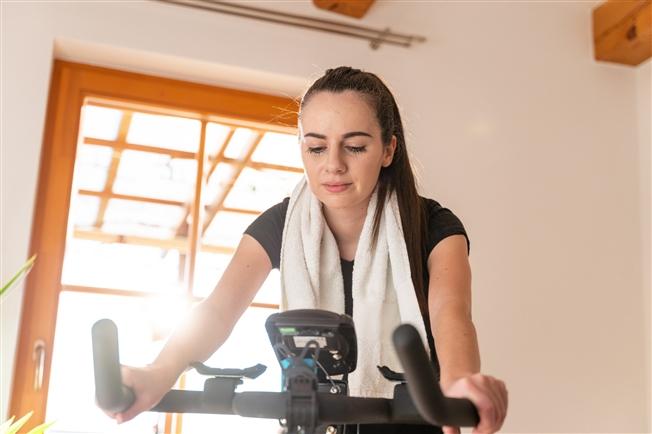Spinning and your pelvic floor

Whether you prefer to spin in a studio with music pumping through the speakers or you're a fan of the open road and conquering new trails, cycling is a popular form of exercise.
"Spinning is not the only form of high-intensity exercise that can negatively impact the pelvic floor. Urinary incontinence is common among female athletes, but pelvic floor issuescan affect both male and female athletes," explains Michele Branca, PT, MSPT, a physical therapist with the Bryn Mawr Rehab Outpatient Network, part of Main Line Health.
But pelvic pain can be especially common among cyclists because so much of the sport involves pressure on the areas of your pelvic floor. The results can range from uncomfortable to painful. Symptoms can include pain, numbness, tingling, urinary or fecal incontinence, or pain or difficulty going to the bathroom.
If you're new to cycling or finished a particularly intense ride, these symptoms may be temporary and subside after a day or a few hours. But these symptoms should not persist or occur after every workout.
To relieve pelvic floor pain, fix your form

- Invest in a larger bike seat: There are plenty of bike seat options to choose from. While most bikes are outfitted with narrow saddles, finding one that is wider can help relieve discomfort. While you're shopping, you might see cushioned seats, too. These seats look and feel comfortable, but don't provide the support a traditional bike seat does.
- Work in breaks for standing: Every few minutes, take a break from a seated ride to stand or ride out of your saddle.
- Heighten your handlebars: If your handlebars are too low, it can put pressure on your pelvic floor.
- Pace yourself: When you're in a spin class or even riding outdoors with other bikers, it can be easy to feel like you have to ride faster, further or push yourself beyond your fitness limits. Remember that your ride is yours alone — that means you should ride at a pace that's challenging but not so challenging that it puts your health or comfort at risk.
- Stretch: People often forget to stretch after an intense workout. Releasing areas of tension may help decrease the pain or discomfort in the pelvic region. If you find yourself dealing with lingering pelvic pain, numbness, tingling or general discomfort, make an appointment with a physical therapist who specializes in the treatment of pelvic floor disorders.
"Pelvic floor pain is common, but it is not normal. So many people assume that pelvic floor pain is just a normal part of aging but that's not the case. If pelvic pain is affecting your quality of life, talk to your primary care provider or an OB/GYN about your pain. Don't suffer in silence," urges Branca.
Main Line Health serves patients at hospitals and health centers throughout the western suburbs of Philadelphia. To schedule an appointment with a specialist at Main Line Health, call 1.866.CALL.MLH (225.5654).
 Content you want, delivered to your inbox
Content you want, delivered to your inbox
Want to get the latest health and wellness articles delivered right to your inbox?
Subscribe to the Well Ahead Newsletter.
